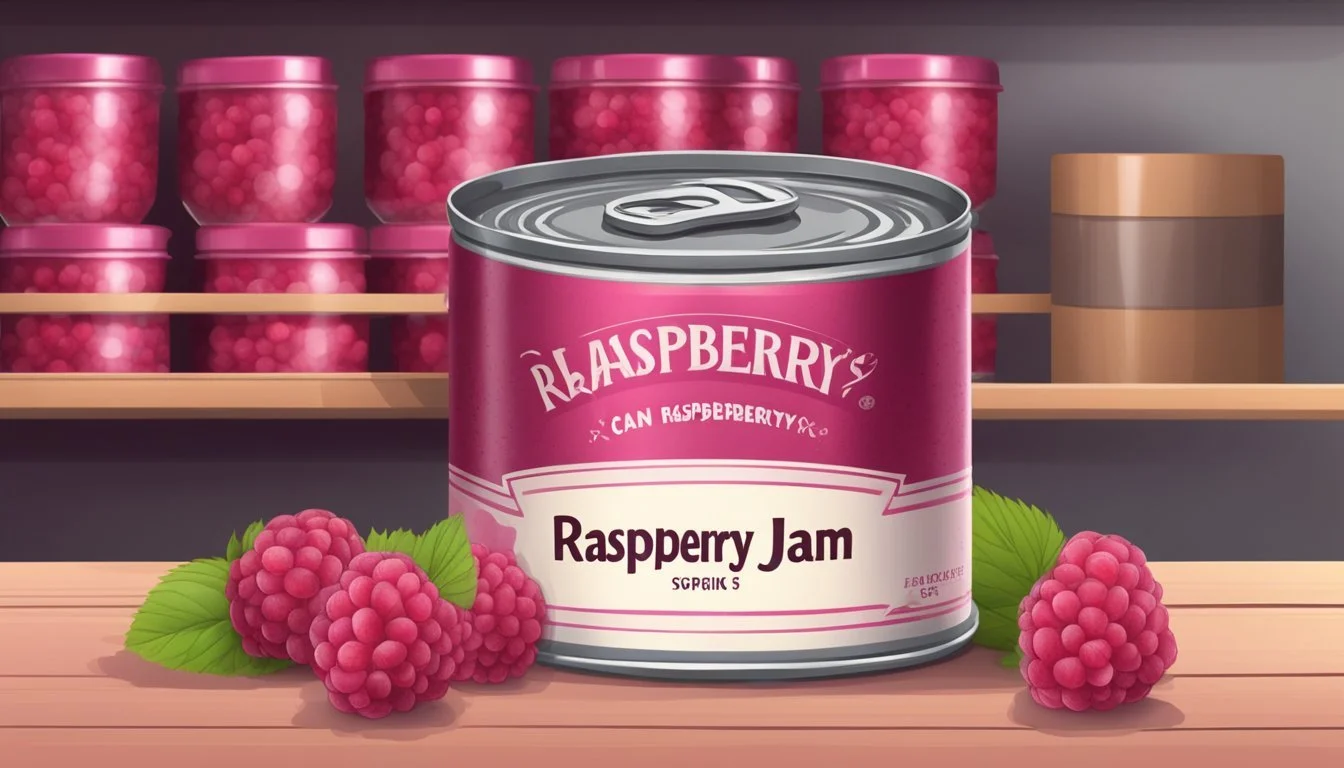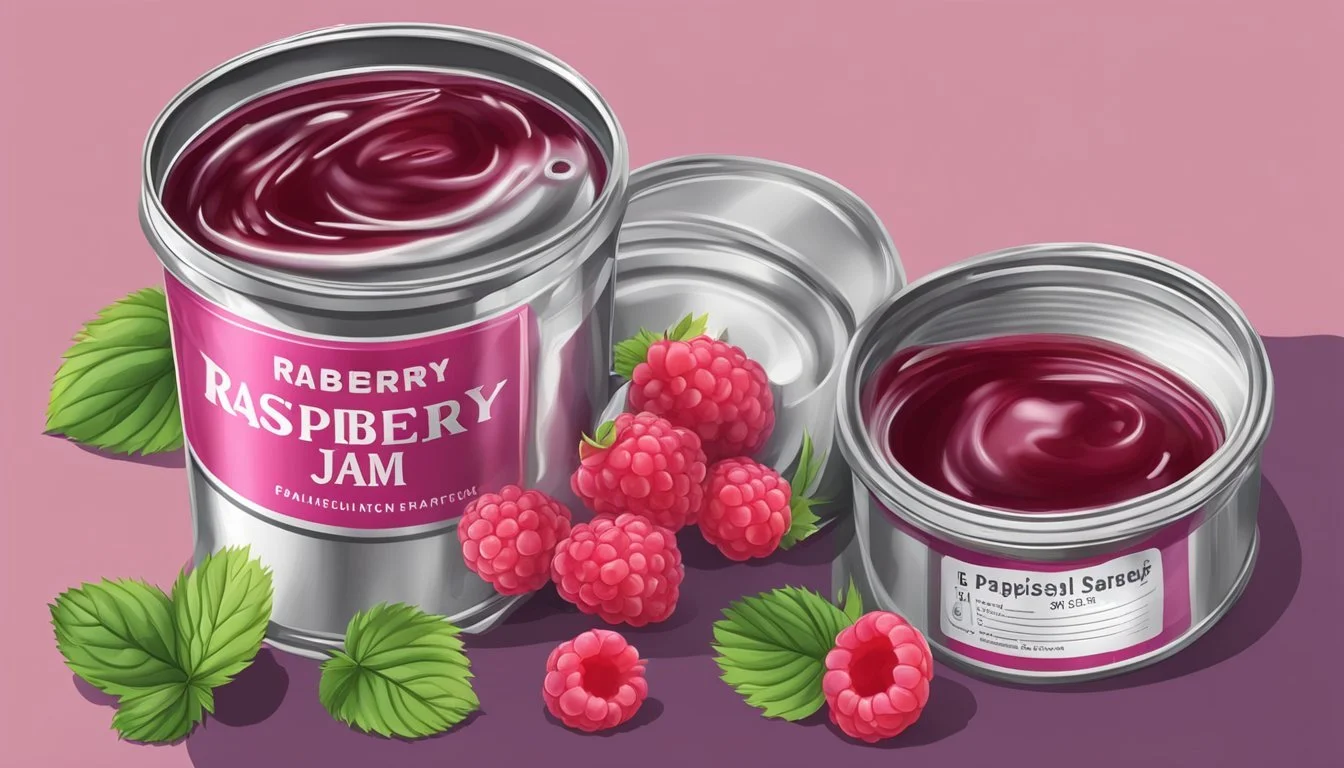Does Canned Raspberry Jam Expire?
Understanding Shelf Life and Signs of Spoilage
When it comes to canned raspberry jam, many wonder about its expiration. Canning is a popular method to preserve the sweet taste of raspberries, ensuring a long shelf life. Properly stored, unopened canned raspberry jam can last up to two years. Factors like the preservative used and storage conditions play significant roles in determining longevity.
Once opened, the shelf life of raspberry jam changes. It typically lasts around six months to one year in the refrigerator. Homemade versions, especially those with less sugar, may only last up to three months once opened.
These time frames can be affected by how the jam is stored and whether the seal remains intact. Ensuring the jam is kept in a cool, dry place and checking that the lid is properly sealed can maximize its shelf life.
Understanding Canned Raspberry Jam
Canned raspberry jam combines simple ingredients with specific preservation techniques to ensure a long shelf life. Differences arise between commercial and homemade versions due to variations in production processes and ingredients.
Composition and Preservatives
Raspberry jam typically consists of fruit, sugar, and sometimes pectin and lemon juice. The ratio of sugar to fruit is crucial, as sugar acts as a preservative. A common recipe involves one cup of sugar per cup of raspberries. This high sugar content not only enhances flavor but also helps in preserving the jam by reducing water activity, which inhibits microbial growth.
Pectin is a natural thickener found in fruits, and it can be added to ensure the right texture. Adding lemon juice helps in balancing the pH, which further ensures safe preservation. The combination of these ingredients results in a jam that is flavorful and has a good consistency.
Canning Process
The canning process is essential for extending the shelf life of raspberry jam. Homemade jam is often processed using a water bath canner, which involves placing filled glass jars in boiling water to sterilize them and ensure a vacuum seal. This step is crucial for killing any microorganisms that could cause spoilage.
Sterilizing Mason jars before filling them with jam and ensuring they are sealed properly helps in long-term storage. Once sealed, jars should be stored in a cool, dry place, and an unopened jar can last up to two years. Once opened, proper refrigerator storage can extend the jam's freshness for another six months to a year.
Commercial vs. Homemade Jam
Commercial jams often differ from homemade versions in terms of ingredients and processing methods. Commercial jams may contain added preservatives and stabilizers, ensuring even longer shelf life. They also benefit from industrial equipment that ensures consistent results and stringent quality control.
In contrast, homemade jam typically uses fewer additives and relies on traditional canning methods. The key difference is the personalized touch and potential for customized flavors that homemade versions offer. Despite these differences, both types can provide delicious raspberry jam with effective preservation when properly processed and stored.
Storing Raspberry Jam
Proper storage of raspberry jam can significantly extend its shelf life and maintain its quality. Key factors include temperature, humidity, and packaging.
Optimal Storage Conditions
Raspberry jam should be stored in a cool and dry place to ensure peak quality. The pantry is an ideal location, as it provides a stable temperature away from direct sunlight.
It is essential to ensure that the jam jar's lid is tightly sealed to prevent air from entering, which can cause spoilage. Removing bands after canning can help avoid rust buildup and make it easier to identify if the seal has broken.
For opened jars, refrigeration is recommended. Keep the jar in the fridge to slow down the growth of any potential contaminants. If you plan to store jams for an extended period, consider freezing them. Transfer the jam to an airtight container with some head space to allow for expansion.
Shelf Life Guidelines
An unopened jar of raspberry jam can maintain its best quality for about two years when stored correctly. This duration can be slightly longer for jam stored in optimal conditions.
Once opened, the jam can last in the refrigerator for up to one year. Always check the best before date and inspect the contents before consuming.
Canned homemade raspberry jam has a shelf life of at least one year when stored in a cool, dry cupboard. It is advisable to label each jar with the type of jam and the date it was made. Never stack jars on top of each other to avoid damaging the lids or affecting the seal.
Using these guidelines ensures that raspberry jam remains safe to eat and maintains its quality over time.
Signs of Spoilage in Raspberry Jam
Raspberry jam, like other preserved foods, can spoil over time. Key indicators of spoilage include changes in appearance, texture, smell, and taste.
Visual and Textural Clues
Mold growth is a clear sign that raspberry jam has spoiled. Look for any fuzzy or discolored patches on the surface. Discoloration is another visual clue; if the jam has turned a dark brown or faded from its original vibrant hue, it may be unsafe to eat.
Check the texture. If the jam has become unusually thick and clumpy or has separated with watery layers, it may be a sign of contamination. These changes could indicate bacterial growth or other spoilage.
Smell and Taste
Spoiled raspberry jam often emits an off or sour smell, which indicates bacterial activity. If the jam smells different from its original fragrant aroma, it's best to discard it.
Taste is another important indicator. If the jam tastes sour or has a strange flavor, it is likely spoiled. Consuming jam with off flavors can pose food safety risks, including the danger of ingesting harmful bacteria.
Health and Safety Concerns
When dealing with canned raspberry jam, it’s crucial to pay attention to possible health risks and methods to prevent contamination. Knowing these can help avoid foodborne illnesses and ensure that the jam remains safe for consumption.
Risk of Consuming Expired Jam
Expired raspberry jam can pose serious health risks. Harmful bacteria like Clostridium botulinum, which causes botulism, can grow in improperly stored jam. The symptoms of botulism include muscle weakness and respiratory problems, and can be fatal.
Molds can develop in outdated jam, producing mycotoxins that are hazardous to human health. If the jam shows signs of mold, discoloration, or off smells, it should be discarded. Appropriate storage, such as keeping jars in a cool, dark place, minimizes these risks.
Preventing Contamination
Proper food safety practices are essential when handling canned raspberry jam. Always ensure that jars and lids are sterilized before canning. Use a water bath canner to heat the jam to a safe temperature, killing any bacteria present.
Store unopened jars at a stable temperature, avoiding exposure to extreme heat or cold. Once opened, refrigerate the jam and use it within six months. Regularly check for any changes in color, texture, or smell as indicators of spoilage.
By adhering to these methods, the risk of contamination can be significantly reduced, keeping your raspberry jam safe to enjoy.
Preservation and Shelf Life Enhancement
Proper preservation techniques can significantly extend the shelf life of canned raspberry jam. Key methods include effective canning processes and alternative storage options.
Improving Longevity with Proper Canning
Using tried-and-true canning methods helps protect the quality and safety of raspberry jam. Water bath canning is preferred for acidic foods like jam. During this method, canning equipment such as a rack and jars are sterilized before use.
The USDA recommends processing jars in a boiling water bath for 10 minutes to kill any bacteria. Adding sugar and pectin not only aids in gelling but also acts as a preservative. Ensuring jars are sealed properly to prevent contamination is crucial. Cooling jars at room temperature and storing in a cool, dark place further enhances longevity.
Alternative Preservation Methods
In addition to traditional canning, other methods can preserve raspberry jam effectively. Freezer jam is an option; it involves less processing and preserves more of the fruit's fresh taste. Store it in airtight containers and refrigerate for up to six months or freeze for longer periods.
Dehydrating raspberries to make fruit leather is another technique. This method removes moisture, thus preventing spoilage. Using these alternative methods can diversify the ways you can enjoy raspberry preserves while extending their shelf life.
Using Expired Raspberry Jam
Expired raspberry jam can be repurposed in creative ways beyond food consumption, but it's crucial to assess its condition before using it. Monitoring for mold, discoloration, or off odors is essential to determine usability.
Non-Food Applications
Expired raspberry jam found unsuited for consumption can be utilized in various non-food applications. One popular use is crafting homemade beauty recipes like lip scrubs. Combine jam with granulated sugar, creating an exfoliant that is both effective and fragrant.
It can also serve in art projects, particularly as a natural dye. The rich color can be extracted from the jam to color fabrics or paper. Additionally, it can act as a glaze for clay or other crafting materials due to its sticky texture.
Assessing Usability
Before considering any use, examine the jam carefully. Properly stored, unopened jars kept in cool, dry conditions may still be usable. Check the head space under the lid; ensure there's no mold or significant discoloration.
Unpleasant odors signal bacterial growth and render the jam unsafe. Storage conditions play a key role in maintaining quality. Even if expired, if there's no sign of spoilage and it appears and smells as expected, it may still have some practical uses. Always err on the side of caution to avoid health risks.
Frequently Asked Questions
Understanding the shelf life and safety of canned raspberry jam can help you make informed decisions about storage and consumption. Key points covered include freezing options, potential risks of expired jam, and indicators of spoilage.
Can You Freeze Raspberry Jam?
Yes, raspberry jam can be frozen to extend its shelf life. Freezing preserves the jam's texture and flavor, allowing it to last up to a year or more if properly stored. To freeze jam, transfer it to an airtight container, leaving some space at the top for expansion. Label the container with the date to track storage time. Thaw frozen jam in the refrigerator before use to maintain the best quality.
What Happens If You Eat Expired Jam?
Eating expired jam isn't necessarily unsafe, but it does carry risks. If the jam shows no signs of mold, discoloration, or off odors, and it has been stored properly, it might still be safe. Mold and bacteria can form in expired jam, leading to food poisoning. It's crucial to inspect the jam thoroughly before consumption and discard any that appears compromised.
How Do You Know If Canned Jam Is Bad?
To determine if canned jam is bad, look for several signs. Check the seal; a good seal keeps the jam safe. Examine the lid to ensure it's concave and unbroken. Smell the jam—an off odor indicates spoilage. Visible mold, discoloration, and changes in texture are clear signs of bad jam. If any of these signs are present, discard the jam immediately for food safety.







